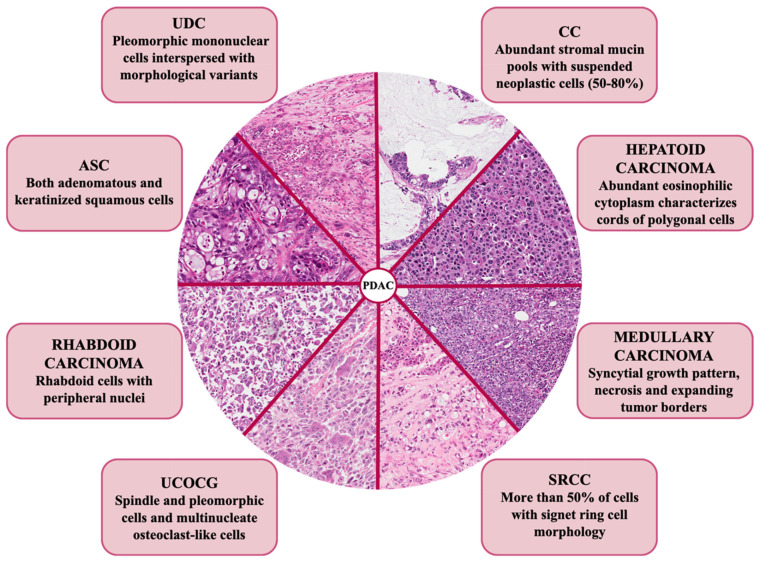Figure 1.
Histologic hallmarks of the different morphologic pancreatic ductal adenocarcinoma (PDAC) variants. Colloid carcinoma (CC): this variant shows extracellular pools of mucin with floating neoplastic cells. Hepatoid carcinoma: this variant is very similar to hepatocellular carcinoma, with polygonal cells showing eosinophilic and large cytoplasm. Medullary carcinoma: this variant shows a syncytial-growth pattern, without glandular structures. Signet-ring cells carcinoma (SRCC): in this variant, neoplastic cells are poorly cohesive and show intracellular mucin with peripheral nuclei. Undifferentiated carcinoma with osteoclast-like giant cells (UCOGC): this variant is composed of three types of cells: multi-nucleated osteoclast-like cells, which are giant cells belonging to the monocyte-macrophage lineage, mononuclear histiocytes and neoplastic cells, which are usually very atypical. Rhabdoid carcinoma: the cells are very atypical and enlarged, with classic rhabdoid features. Adenosquamous carcinoma (ASC): in this variant, there is a mixture of neoplastic glands and tumor cells with squamous features (to be classified adenosquamous, the adenocarcinoma must contain at least 30% of squamous component), with the latter that may have a high degree of atypia. Undifferentiated carcinoma (UDC), anaplastic subtype: this variant totally lacks a glandular architecture and tumor cells are very atypical and pleomorphic; UDC, sarcomatoid variant: this variant totally lacks a glandular architecture and neoplastic cells are very atypical and spindle-shaped. Original magnification: ×20.

